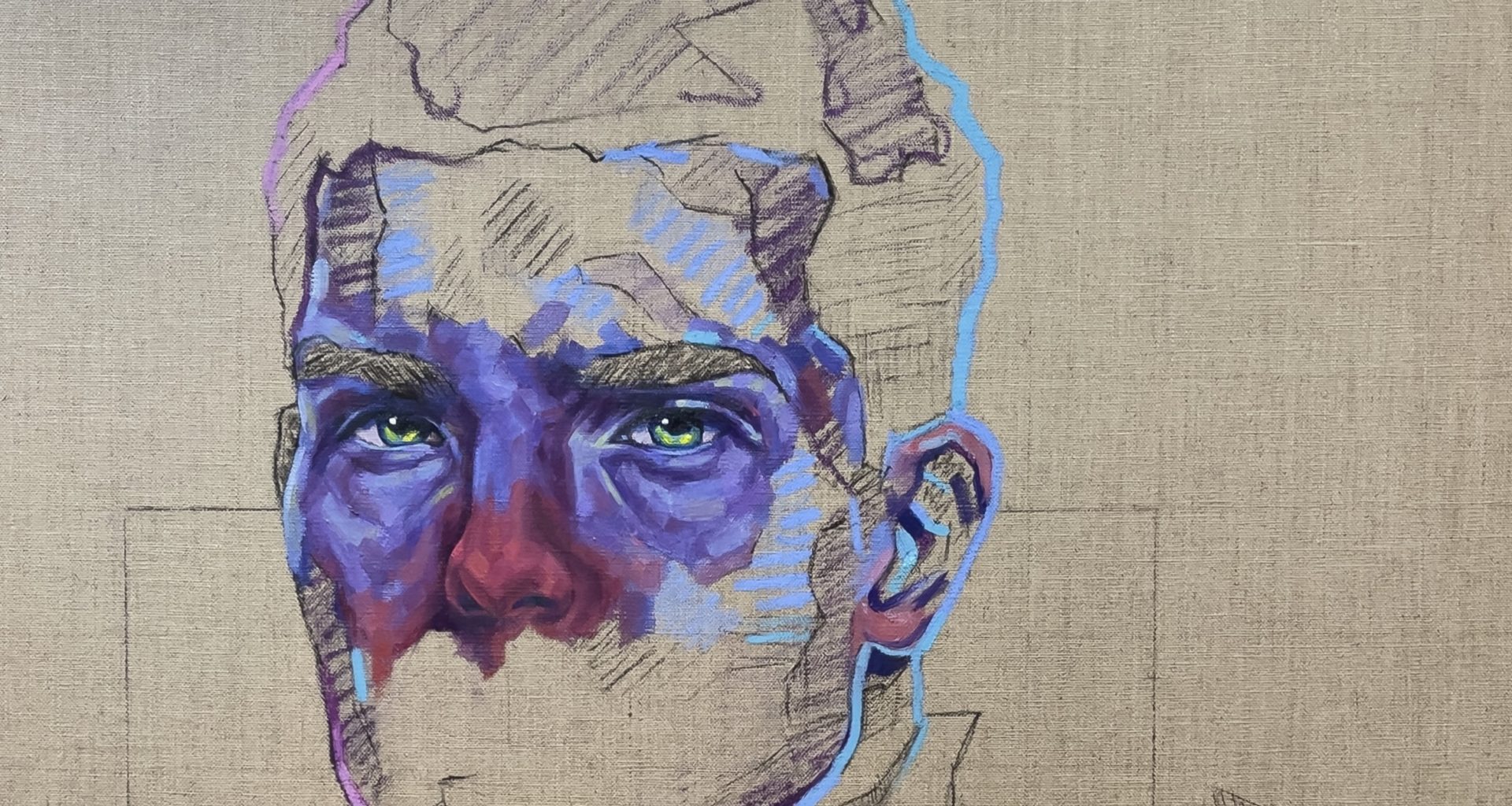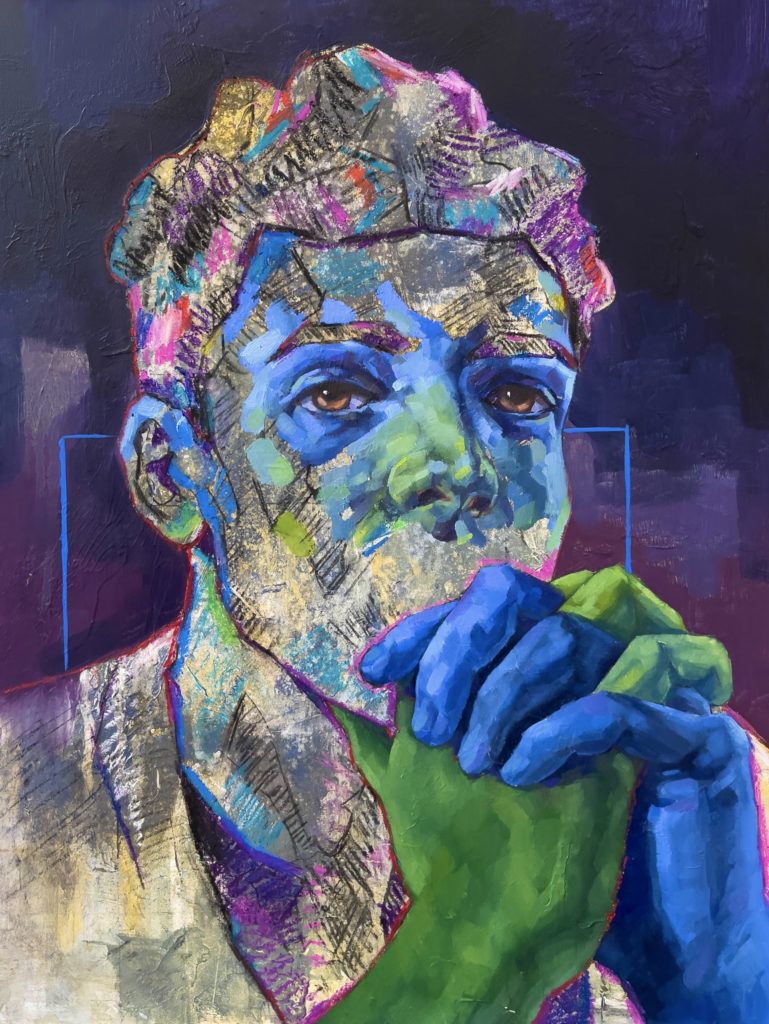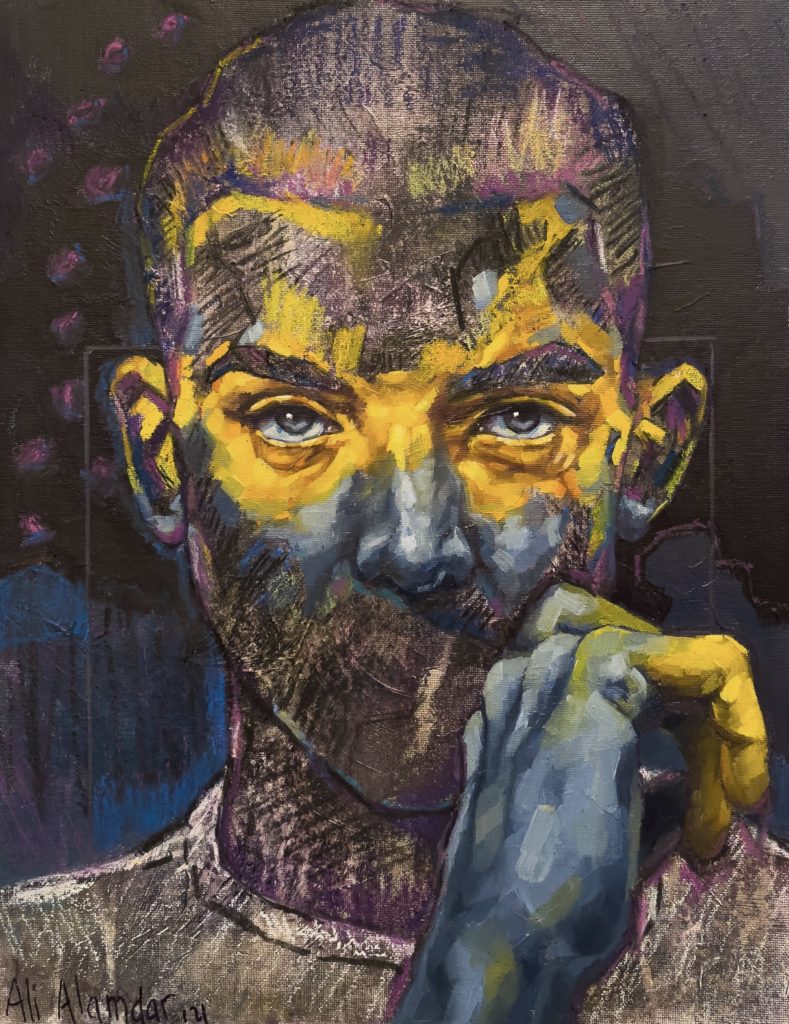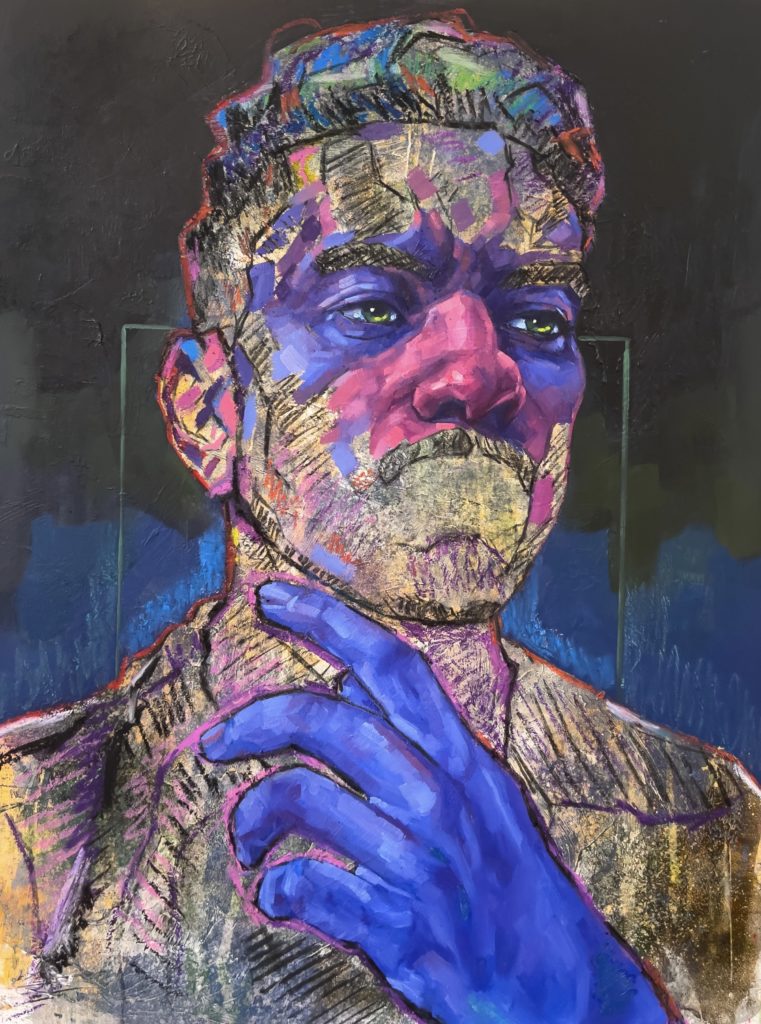When I first came across Ali Alamdar’s portrait paintings on Instagram I was struck by the uniqueness of his aesthetic. The paintings exhibited had layers of mixed media, some parts of the faces were left blank or in sketch form, while some parts were completely rendered. These portraits only exposed portions of the face while leaving the rest up to the imagination of the viewer. I wondered, if my portrait had been amongst Alamdar’s collection, what parts of my face would be missing and what parts would be highlighted?
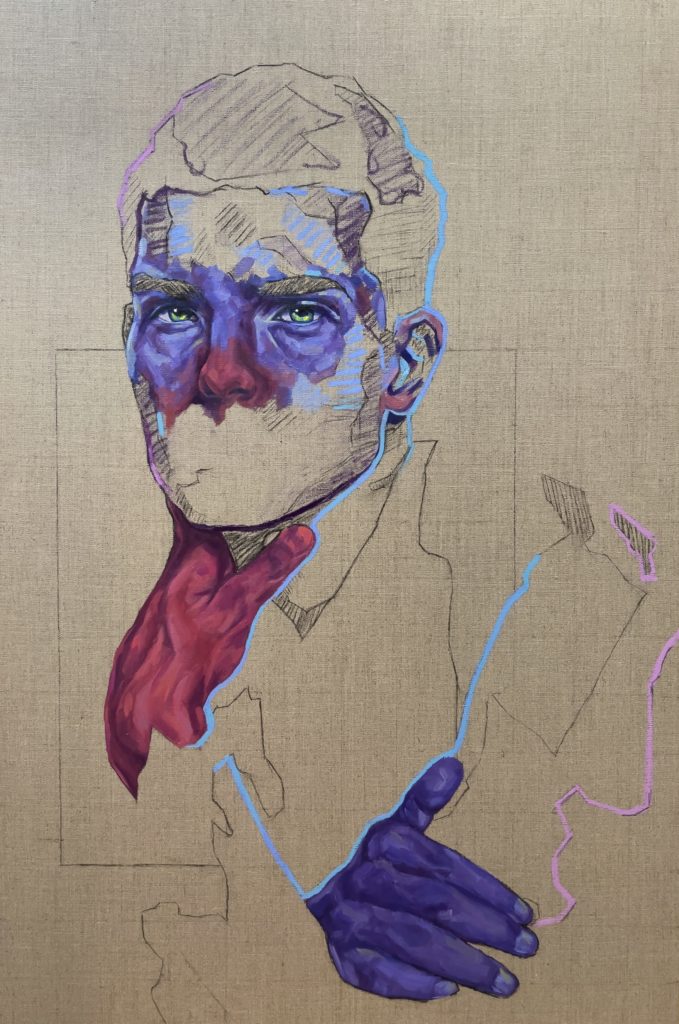
A 21-year-old Kuwaiti contemporary artist currently based in Houston, Texas, Alamdar is known for his unique portrait painting style and for using oil paints to express his fascination with imperfection. By purposely leaving out important features, and entire areas unfinished, he creates a sense of mystery, suspense, and dynamism in his work. Having started his artistic journey in 2016 as a self-taught artist, he has since participated in numerous exhibitions and appeared in various publications locally and abroad. In 2021, he received first place in the Archway Gallery competition in Houston.
When speaking with Alamdar, he mentioned that he loves focusing on imperfections and works in progress – likening his work to a building being constructed, with the scaffolding and structural beams still exposed. His work invokes the tension and vulnerability of mulling over our dislikes about our appearances as viewers, at the same time perhaps suggesting that without these perceived imperfections, we would be incomplete. Alamdar believes that we are drawn to brokenness in humans and in life, which is evident when his seemingly unfinished work is the first to catch the eye of visitors at an art gallery amongst a series of completely rendered paintings.
Alamdar lived in Kuwait before moving to Houston, Texas when he was twelve years old. When asked about the beginning of his creative journey, Alamdar mentioned that it all started in 2016 after he bought an art set with his father at a supermarket, which led to his very first creation – a self-portrait. His father, Bader Alamdar, is a Kuwaiti sculptor and, Alamdar assures, is fully supportive of his son’s efforts in pursuing art. Considering the cultural attitude towards the arts as a profession, this comes as a relief while also posing the question of what local creatives would be able to achieve if they did not have to exert their energy rebelling against the status quo and/or pursuing a “respectable” career.
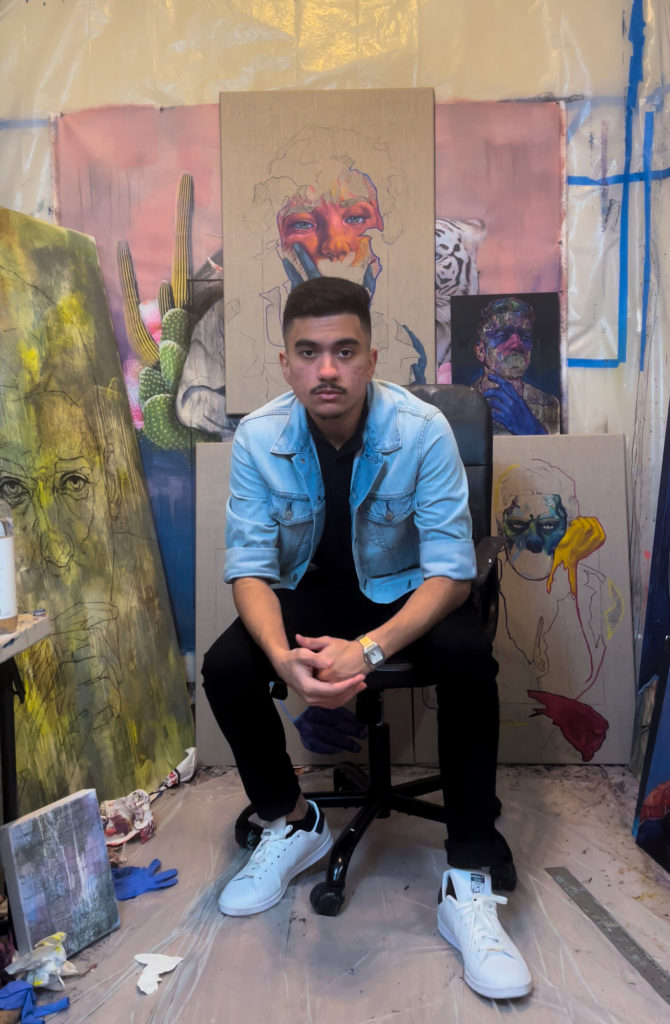
Despite having a supportive artistic family, Alamdar believes that he would not have reached his current success if he wasn’t living in the United States, where, according to him, art is taken seriously, with more opportunities for recognition and prosperity. Although Alamdar is a self-taught artist, he has benefited greatly from living in Houston where he learned how to market his work and made connections in the art world.
When asked about his experiences in the Arab Gulf art scene, Alamdar admits that he hasn’t had the greatest of experiences within the regional art industry, bringing up an instance where his work was plagiarized and exhibited at an art gallery in one of the Gulf states. However, an even more devastating experience happened when Alamadar himself was accused of plagiarism by one of his favorite artists from the region. When asked to elaborate, Alamdar replied that although he did learn some techniques from observing this artist’s work, he’s confident that his work is completely his own.
Alamdar also spoke about the backlash his father received for creating sculptures of people – the public deeming the works heretical and offensive. Since painting portraits is also an area of sensitivity among some religious groups, I imagined Alamdar might have gone through a similar experience as his father. Thankfully, he hasn’t received any criticism of that sort, which he attributes to the captioning of his work being written in English as opposed to Arabic, making him fly under the radar of a large percentage of the population. When asked if there are any paintings he refrains from sharing, he mentioned that he likes painting nude sculptures since they are challenging to paint but that he does not share the results for fear of stirring up controversy back in his home country. Confirming that even with remoteness and family support, Khaleeji creatives often have to exercise a measure of self-censorship.
When asked about his artistic process, Alamdar mentioned that he begins by using acrylic as a backdrop and then layers on top with charcoal, oil paint, and sometimes oil pastels. Adding that he likes to listen to murder documentaries while painting, a habit which some might suggest is reflected in his paintings’ color palettes and facial expressions that have an aura of darkness. Conversely, he sometimes switches to Disney music and documentaries, which while yielding a brighter, more vibrant color palette, nevertheless cannot undo his classic slightly troubled undertone. He thinks deeply about the composition of his final piece, trying to balance the many different media into one harmonious blend, weighing the vibrant against the muted.
When asked about the business of art, he stated that being an artist is “ninety-nine percent business, one percent art.” He stressed the importance of marketing and making connections as being the foundation to one’s creative success. Considering today’s market, artists might want to take a page from Alamdar’s book on self-reliance and business savviness. It can be said that Alamdar is ahead of the game in spite (or perhaps because) of his young age, already having a substantial following on Instagram and pursuing a Marketing degree. Ending our meeting by succinctly summarizing his belief, he said: “it doesn’t matter if you can paint like Michelangelo if no one knows where to find you.”
You can keep up and learn more about Ali Alamdar by visiting his website and following him on Instagram.
Words by Mohammed Alhouti
Images courtesy of Ali Alamdar

